Selected Research Projects
We conducted different research projects (NBIF, MITACS, NSERC Engage, NSERC/Cisco IRC projects) collaborating with different companies (e.g.: Cisco, Eigen Innovation, Rimot, The Black Arcs, Codiac Transpo, HotSpot) to develop working prototypes that could be used as a template for the company's products in the future. Our research activities focus on the following topics:
- Edge Computing, Fog Computing, Cloud Computing
Combining edge, fog, and cloud resources to build an architecture for Analytics Everywhere Framework. - Cyber-Physical Systems, Internet of Things
Implementing different sensors to collect data in real time and applying them in many smart city use case studies. - Big Data Analytics, Data Science
Analyzing continous and accumulated data streams using different analytical capabilities such as descriptive, diagnostics, predictive analytics. - Machine Learning, Artificial Intelligence
Developing different machine learning, deep learning to perform incremental online learning, federated learning, transfer learning on data streams.
Belows are the selected projects, tutorial, outcomes from our past and current research.
Smart Building Project
Smart City
Our lab are involving with the The Smart Campus Integration and Testing Lab project leading by Toronto Metropolitan University. Topics of investigation include integrating Smart City and Smart Campus management, optimizing building energy efficiency, improving occupant health and productivity, reducing carbon emissions and mitigating cybersecurity risks. One of the two remote installations in buildings at UNB will contribute data to the system.
[Latest Info]
Automated Defect Detection using Transfer Learning
Smart Manufacturing
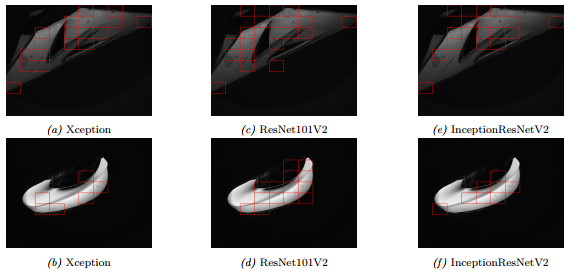
Quality assurance is crucial in the smart manufacturing industry as it identifies the presence of defects in finished products before they are shipped out. Eigen Innovations Inc. provides the solutions to help the manufacturing industry through an AI-enabled industrial vision platform to detect quality issues of the products in real-time. While the platform works very well in certain applications, it is challenging to scale and adapt algorithms to new contexts and scenarios such as new vision camera perspectives, new part geometries, etc. To assist the company to solve this problem, the Analytics Everywhere Lab at UNB, Dr. Hung Cao, and Eigen Innovations Inc. will collaborate on a joint exploratory AI-enabled project that leverages the most advantageous and latest AI technologies to improve the scalability of the company’s current defect detection models. This research project aims to identify the relevance of leveraging transfer learning techniques and synthetic data approaches to minimize the necessity for large labeled datasets at the start of each new application. This project is funded by NBIF.
[Publications] [Impact Story]
Land Mobile Radio System
Industry 4.0
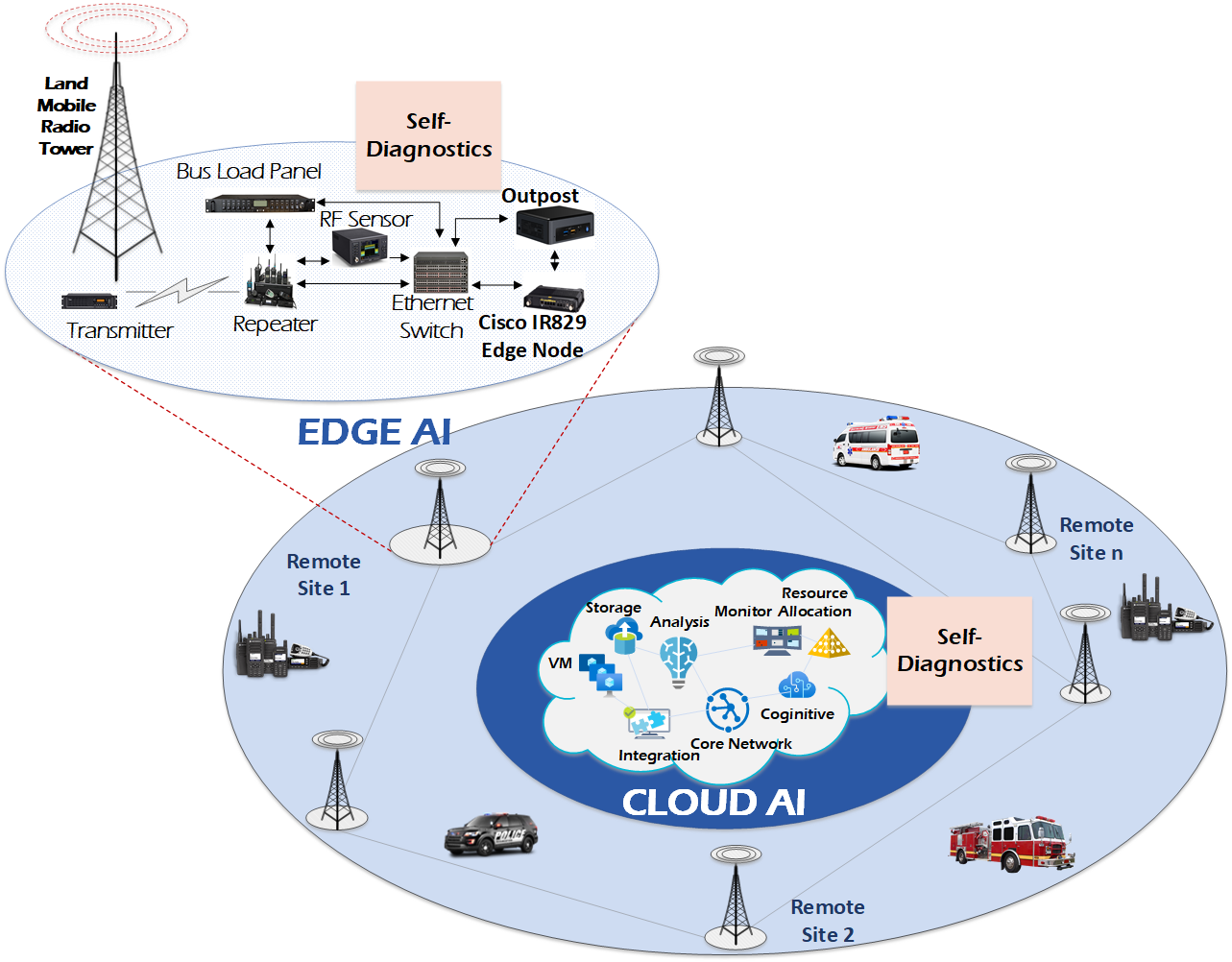
In urgent situations like natural disasters — or even the current pandemic — Canadian first-response teams rely on mobile radio systems to communicate in a fast and secure way. Manufacturers globally also use radio systems in their production plants. Enabling radio communications requires a complex infrastructure with hundreds of thousands of radio repeater sites spread across North America and the globe. Land mobile radio systems generate large amounts of operational data and system alarms on a daily basis. Most of this vital data goes unused and requires sending a technician out to manually investigate every alarm. Our AE Lab set out to collabrate with Rimot.io Inc under a MITACS-funded project to develop a platform capable of using machine learning to quickly and accurately identify sensor problems and, in turn, predict future issues, reduce outages, and improve the system’s reliability. We proposed combining cloud and edge computing to eliminate the distance and time it takes to send data to centralized sources.
[Publications] [Impact Story]
EV Platform
Smart Grid
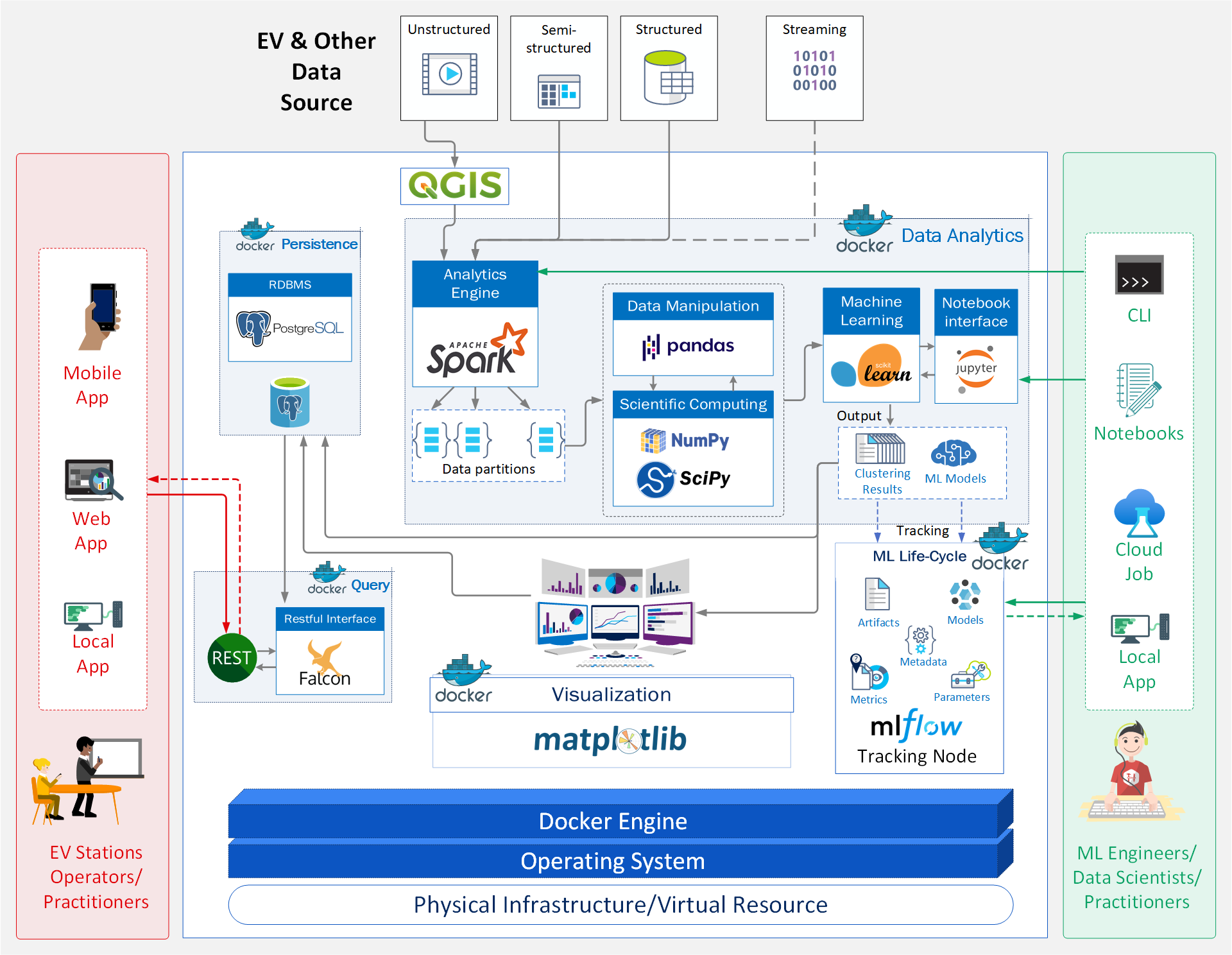
The commitments of authorities around the world to electrify the transportation sector will have an impact on air quality, sustainable mobility and the management of natural resources. In 2016, New Brunswick had the 3rd highest per-capita Green House Gas (GHG) emissions in Canada and 30% of these emissions came from the transportation sector. Moreover, 24% of GHG emissions were attributable to vehicles in Canada. Transport electrification introduces new opportunities in supporting sustainable mobility. Fostering Electric Vehicle (EV) adoption integrates vehicle range and infrastructure deployment concerns. An understanding of EV charging patterns is crucial for optimizing charging infrastructure placement and managing costs. We proposed an end-to-end platform prototype named “EVStationSIM” that allows for the creation of relative rankings of similar clustering results. The ultimate goal is to support users/practitioners by allowing them to identify and interpret similar clustering patterns of EV charging sta- tions using multiple time slices. The performance of this proposed platform is demonstrated with a case study using real-world EV charging event data from charging station operators in New Brunswick, Canada. The case study illustrates how generated results can assist in downstream analytical tasks such as planning infrastructure allocation expansions.
[Publications]
Analytics Everywhere Framework
Generating new insights from the Internet of Things
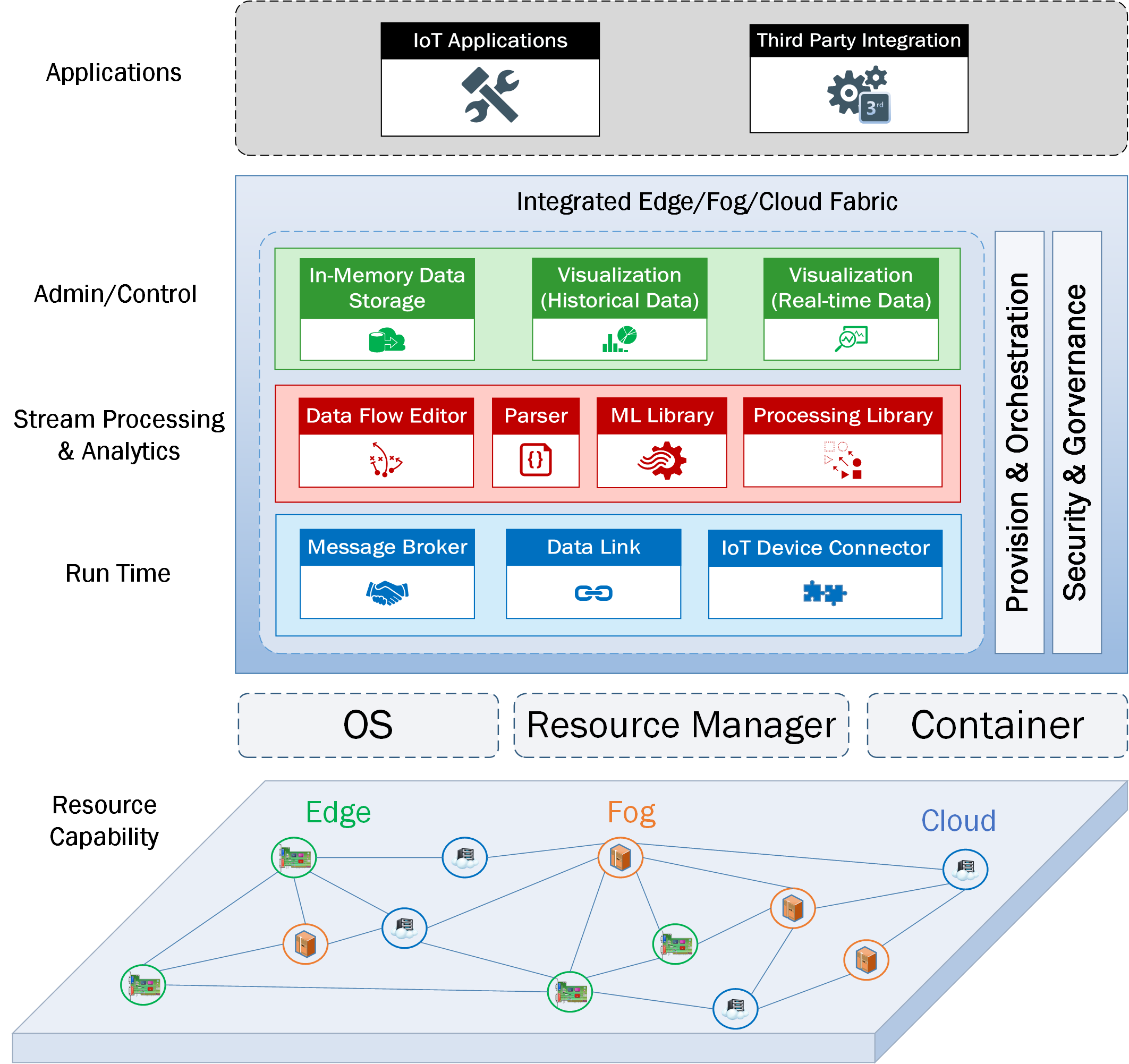
Analytics Everywhere is our proposed conceptual framework that is developed based on edge-fog-cloud continuum to handle an enormous volume of incoming data streams from IoT devices and perform a network of analytical tasks (different analytical capabilities such as descriptive, diagnostic, and predictive analytics) according to a data life-cycle. This major breakthrough framework provided us with an iterative learning experience on how to advance our research towards automated analytical tasks for the Internet of Things.
[Publications] [Demo]
Smart Transit
A smart city use case study
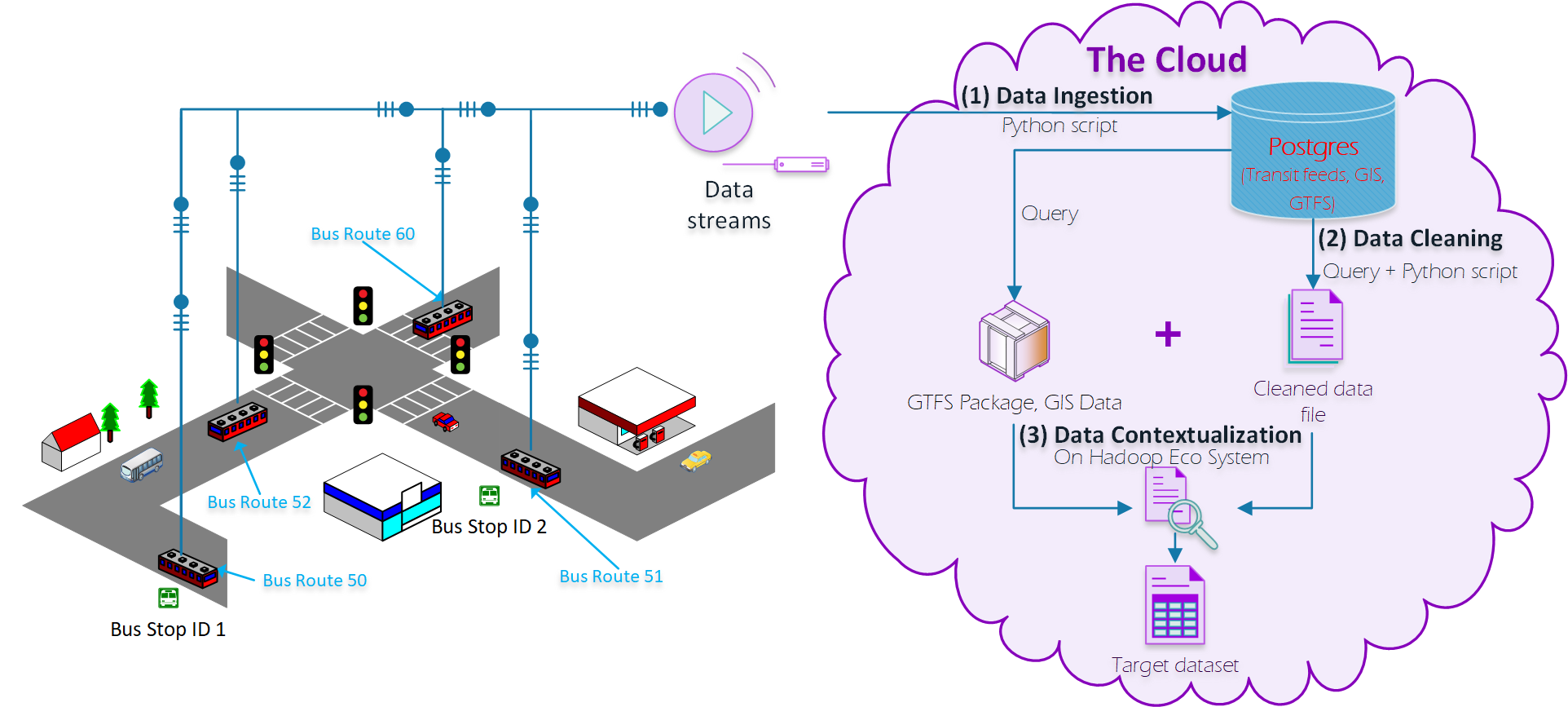
Small transit agencies tend to have limited resources for facing the challenges of continually increasing the high quality of the delivered transit services and reducing private car dependency while ensuring low operational costs, low environmental impact, and safety. Our smart transit case study aim at combining the current transit facilities with new technologies such as IoT, Analytics Everywhere, Advanced GIS, Edge/Fog/Cloud Computing Environment to be able to tranform them into a smart city service. The outcomes of this cutting edge research are not only pointing out to the improvement of fleet management effectiveness and efficiency by providing the right information at the right time and reducing staff workload and costs, but it can also support a variety of user groups such as bus drivers and passengers who are seeking new insights to optimize their decisions and adjust their behaviors. For example, bus drivers might be interested in knowing how their driving performance has been for the last week while passengers would be interested in how frequently the services are delivered on-time.
[Publications] [Case Study]
E-health
Social Good

An example for IoT Data Analytics for Social Good is E-health application. This is a joint research between AELab and colleagues at Flinders University, Australia to develop a novel multi-window analytical workflow for biosensor wearable data streams. We collect data from Fitbit devices and streaming them and building an analytical workflow to reveal individuals’ patterns that can yield new self-knowledge insights.
[Publications]
Scaling Electric Vehicle Integration in Digital Grids
Smart Grid
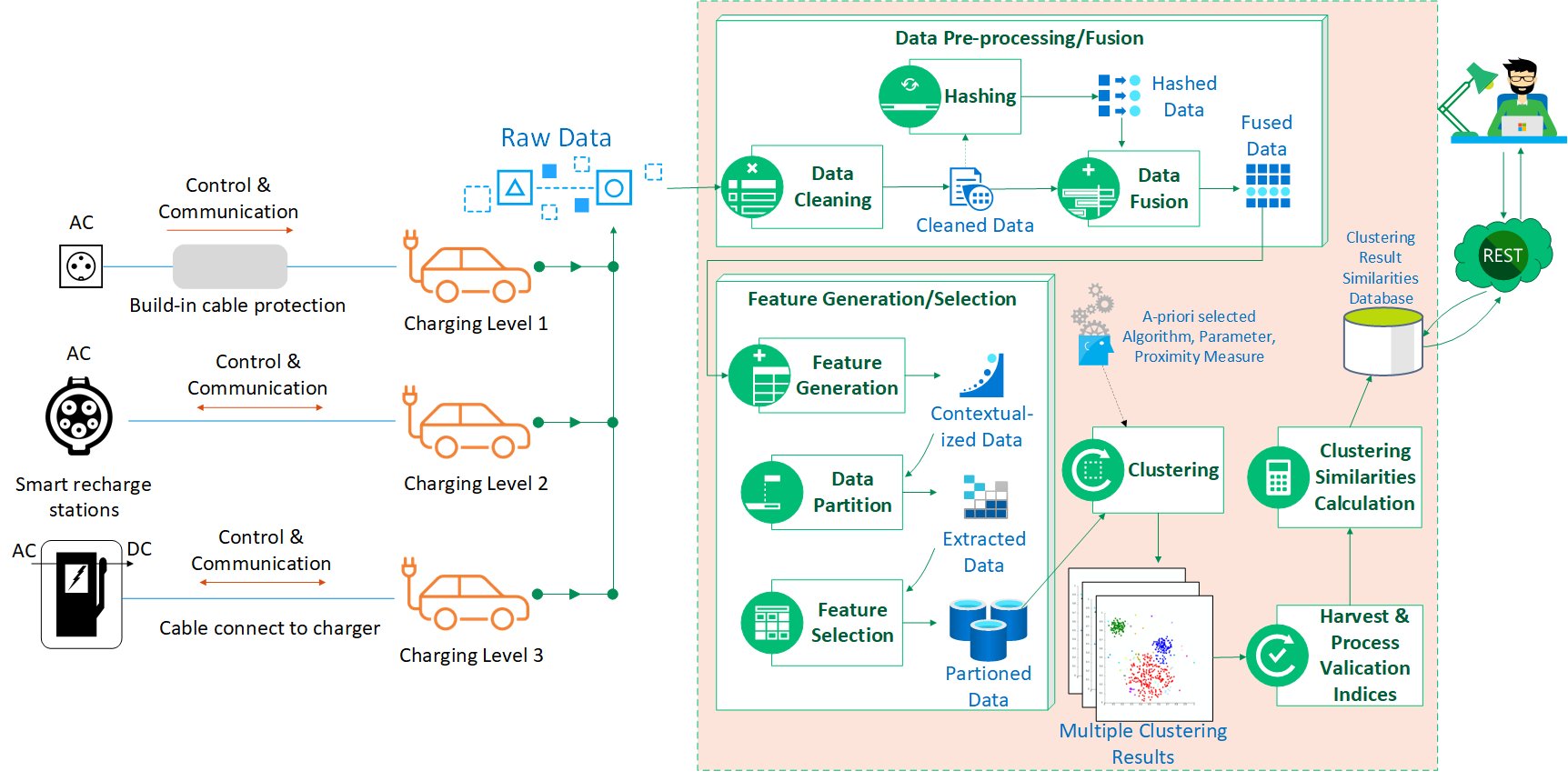
The Analytics Everywhere Framework was used to understand EV usage patterns in New Brunswick. We involveed in the research Theme 2: Scaling Electric Vehicle Integration in Digital Grids. In this project, we collaborate with NB Power, UNB Smart Grid group, Emera and Siemens Canada to develop new technologies for transforming EVs into distributed energy storage devices. We collect the EV charging data from NB power, and developing a machine learning framework for the aggregation, monitoring, optimization, and prediction for smart charging/discharging scheduling at the aggregator and Virtual Power Plant (VPP) levels.
[Publications]
Smart Parking
A smart city use case study
Exploring Internet of Things (IoT) data streams generated by smart cities means not only transforming data into better business decisions in a timely way but also generating long-term location intelligence for developing new forms of urban governance and organization policies. Studies have shown that integrating smart parking into the city framework can shorten parking search time, reduce emissions and fuel consumption and decrease traffic congestion. This IoT use case was carried out in conjunction with the City of Saint John Parking Commission and the HotSpot Parking Company. The IoT data was utilized from both organizations to build a parking prediction model for predicting whether a parking spot is occupied or vacant within the next hour, or the next day. Parking prediction systems can drastically decrease parking times between 20 and 40% in Saint John. This means improving traffic flow by up to 30% and a decreasing in carbon emissions due to a shorter trip time.
[Publications] [Demo]
Indoor Occupancy Prediction
Using non intrusive sensors and big data analytics
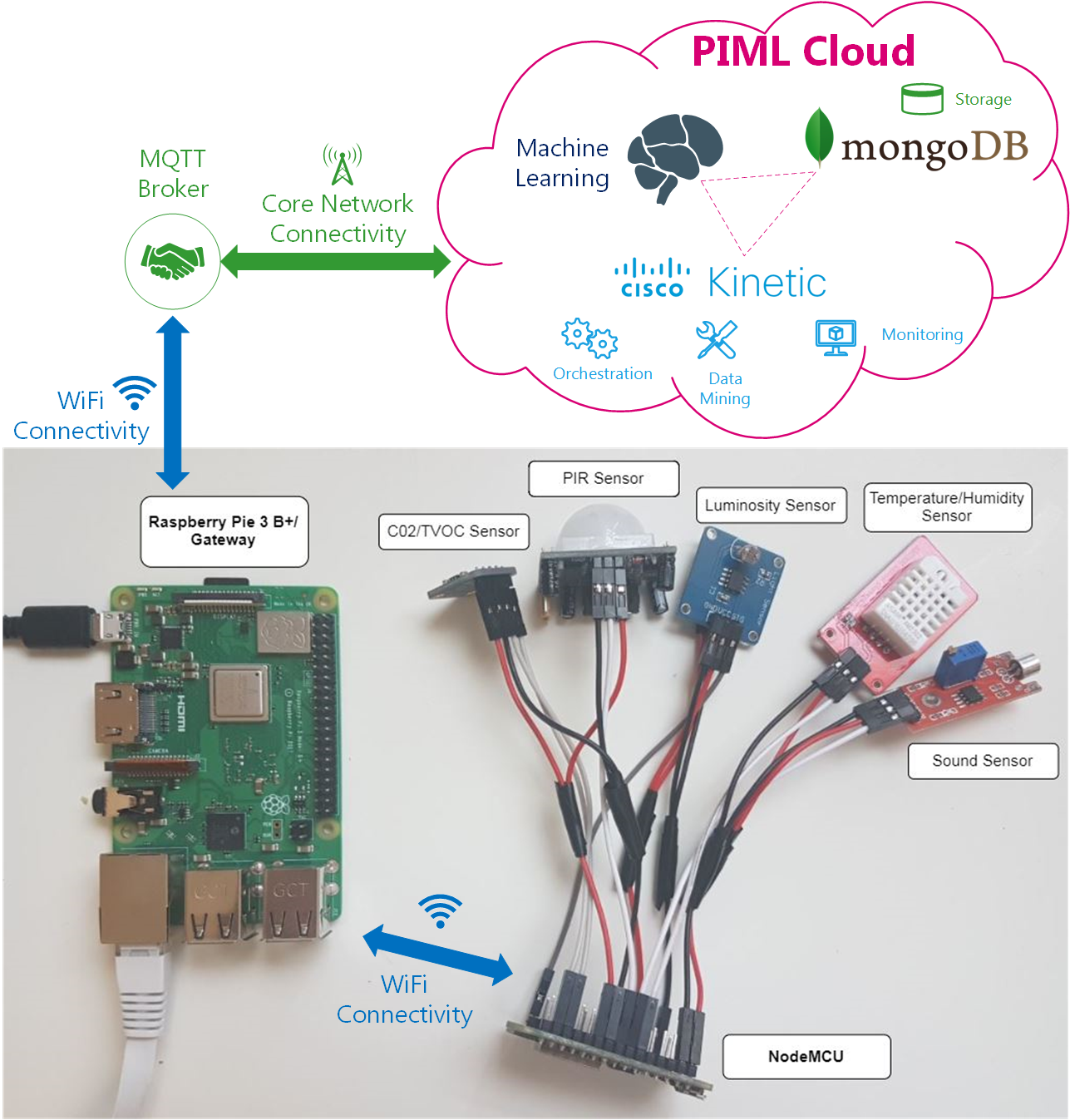
Current research in indoor sensor networks has pointed out an emerging interest in occupancy detection for Building Information Management (BIM), because buildings use 68% of Canada's energy in operation and contribute 17% of greenhouse gas (GHG) emissions. As Canada pursues its COP21 agreement, there is a critical need not only to ensure that new buildings are designed to minimize energy consumption, but to address the performance of the much larger area of existing buildings. This study aims at developing a non-intrusive sensing method for predicting occupancy towards reducing building emission while also promoting a comfortable and productive working environment, while retaining the privacy of occupants. Our proposed IoT platform has the ability to efficiently collect time series and event based raw IoT data obtained from a variety of on board sensors measuring intrinsic environmental information for occupancy prediction.
[Publications]
Air Polution Prediction in Fredericton
IoT for combatting Climate Change


The city of Fredericton has partnered with eleven-x to deploy Internet of Things (IoT) sensors that enable real-time information and data collection from things previously impossible to monitor. Aiming to transform Frederiction into a smart city in the near future, the City is looking to innovate and develop new applications that are vital importance to the city such as real-time flood monitoring, parking occupancy monitoring using real-time connected sensors, quality of life applications for air and noise pollution, water consumption optimization and so on. We had developed a prototype to explore insights from open IoT data (provided by the City) collected through IoT devices/sensors that were deployed around the city (provided by Eleven-X). Our prototype used a deep learning prediction model (LSTM Model) and correlation model to be able to analyze and predict the air and noise pollution aiming to build an early detection and warning system for the people in the urban area. The prototype created by us won the Best Minimum Viable Product Award during 12 hours coding in Fred E-hack Smart City Hackathon.
[Presentation] [Code]
Processing a massive LiDAR dataset on the cloud
Cloud computing
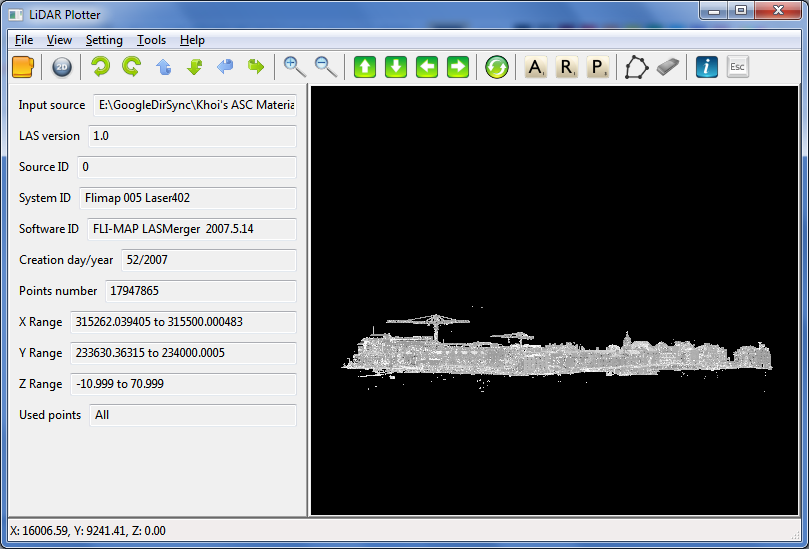
Air-borne Light Detection And Ranging (LiDAR) has been used to acquire three dimensional (3D) topographic data points of object’s surfaces of a large coverage area. The huge volumes and complexity of aerial laser scanning (ALS) data are to be great challenges for data processing as the limitation of the computing hardware. With conventional sequence algorithms, ALS data processing is to be time consuming because the processing is computationally intensive and iterative. This research proposed the cloud comping-based approaches to processing a huge volume of spatial LiDAR data. To harness cloud computing's advantages, an Octree data structure is implemented to index LiDAR points cloud on the Apache Hadoop framework using MapReduce parallel programing model.